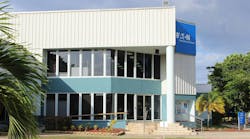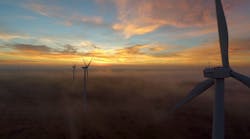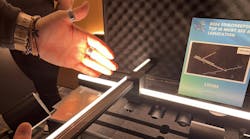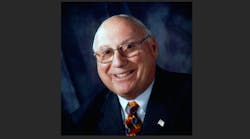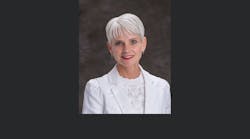Lighting rep Blankenship & Associates, Spokane, Wash., has seen a change in awareness about LEED (Leadership in Energy and Environmental Design) certification since Washington state enacted legislation in July requiring new public facilities exceeding 5,000 square feet to achieve Silver LEED certification from the U.S. Green Building Council.
This summer, Blankenship & Associates hosted a show with Watt Stopper, Santa Clara, Calif., detailing how the manufacturer's lighting control products help buildings attain LEED points for certification. “We had a turnout of 45 people when normally we can barely get 20, so that shows you the interest,” said Darren Blankenship, the company's principal.
Although the new state law is spawning interest in LEED, Blankenship was already seeing plenty of demand for the energy-efficient lighting products of the manufacturers he represents. “It's the overall awareness of the increase in energy costs that seems to be really driving the push,” said Blankenship.
LEED certification, though, is much more than energy-efficient electrical products. The program takes an all-encompassing green approach, looking at environmental-friendly areas beyond energy management. Education is key for all segments within the construction industry as more states and cities implement LEED requirements. Nevada also passed LEED legislation this summer, and many U.S. cities have implemented green building standards requiring LEED certification of certain new construction as well. The list of cities and states requiring LEED will continue to grow.
In addition to earning LEED points by reducing energy consumption, buildings earn points for using construction materials containing recycled content, by significantly reducing construction debris that goes into landfills, through water conservation strategies and for indoor air quality. Using local or regionally manufactured materials can also earn a building a couple of LEED points because construction materials don't have to be trucked across the country, which saves on gasoline consumption and fuel emissions.
With four levels of LEED certification, Certified, Silver, Gold and Platinum, architects must register projects and submit completed project documentation to the U.S. Green Building Council for review, which takes about three months from submittal. To achieve the minimum 26 points necessary to be Certified, or the 33 points to reach Silver certification (69 total points are available), a project has to “start the process from day one to assure enough points,” said Blankenship.
Blankenship's agency has helped supply projects where building owners thought about going for LEED too late in the process. With a utility rebate like Avista Utilities' $1.25 per square foot on new buildings in Washington and Idaho that achieve LEED certification, there's incentive for private new construction to go for LEED certification, but Blankenship cautions it's difficult unless the project team is committed from the start.
For a new office-building project going for LEED certification in Moses Lake, Wash., Blankenship worked with Columbia Lighting, Spokane, Wash., to package fixtures on shrink-wrapped palettes without much cardboard and packaging debris to help earn LEED points. Because the fixtures came from within the region, that also helped with LEED points.
But points obtained by using regional materials could potentially steer business away from an electrical distributor or lighting rep, said Paul Mustone, president of Reflex Lighting Group, Boston. “We've had projects that got steered away from us because our manufacturers were located in California,” said Mustone for an EW article earlier this year (“Taking the LEED,” March 2005, page 34).
According to Blankenship, LEED projects usually don't use stock product when it comes to lighting. “Usually it's made to order,” he said.
Nonetheless, Steve Norris, Reflex Lighting's distributor resources division manager, cautions electrical distributors against substituting like products when supplying a project going for LEED certification because those specified products may be contributing to LEED points.
The biggest problem Blankenship sees in the Washington design community regarding LEED is vagueness about how to achieve LEED certification. Certain savvy architectural and design firms have begun positioning themselves in this niche by having employees become LEED Accredited Professionals. The wise lighting rep and electrical distributor would also do well to learn about LEED.
“Electrical distributors need to educate themselves about the LEED process,” Blankenship said. He advises visiting the U.S. Green Building Council's Web site at www.usgbc.org and downloading the new construction (NC) LEED points check list. “If they concentrate on the electrical section of that points checklist, it will give them a good overview,” Blankenship said.
Watt Stopper and Lutron Electronic Co., Coopersburg, Pa., also have good resources available on their Web sites.
Lighting controls may contribute to obtaining up to 22 points in five or six LEED credit categories, according to a Lutron PDF, “Lighting Control Solutions LEED Buildings,” located on the Lutron Web site. To access Lutron resources, go to www.lutron.com, click on the “Site Search” link, then type in LEED.
The “Sustainable Design” section of Watt Stopper's Web site, at www.wattstopper.com/greensense.html, has a half dozen downloadable PDFs on LEED.
